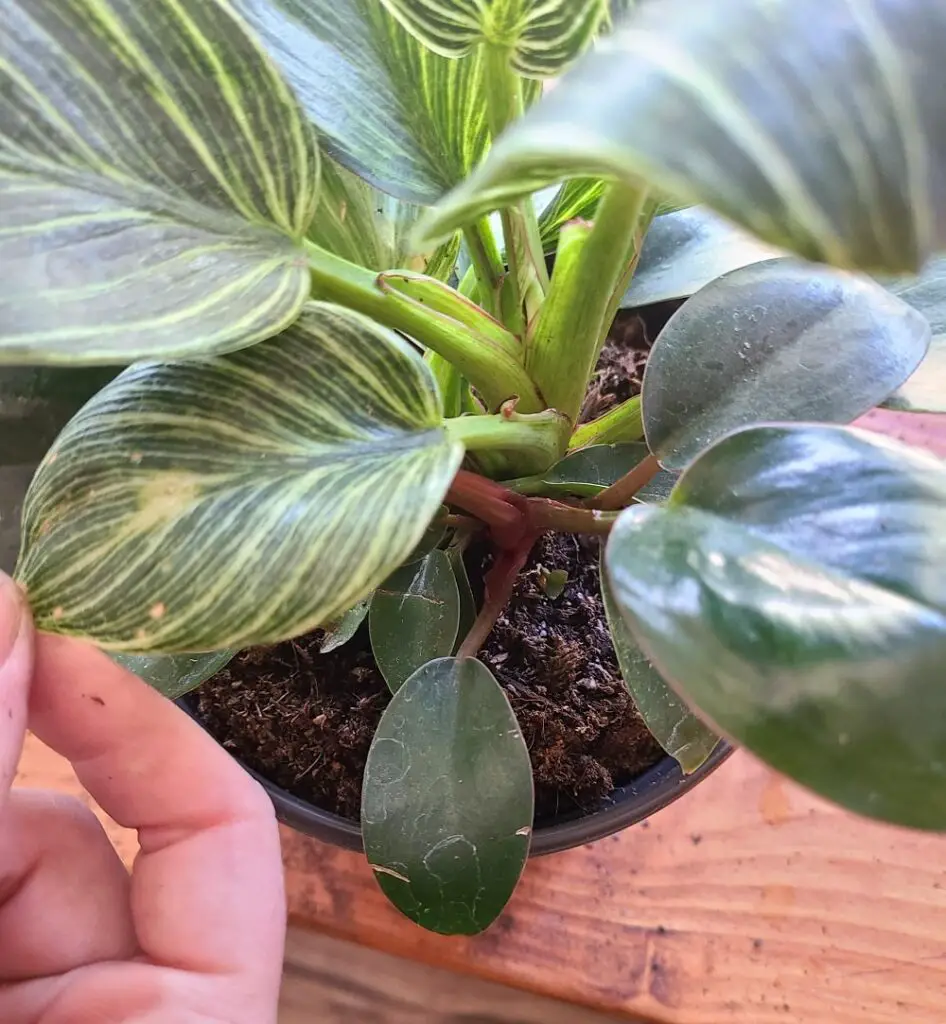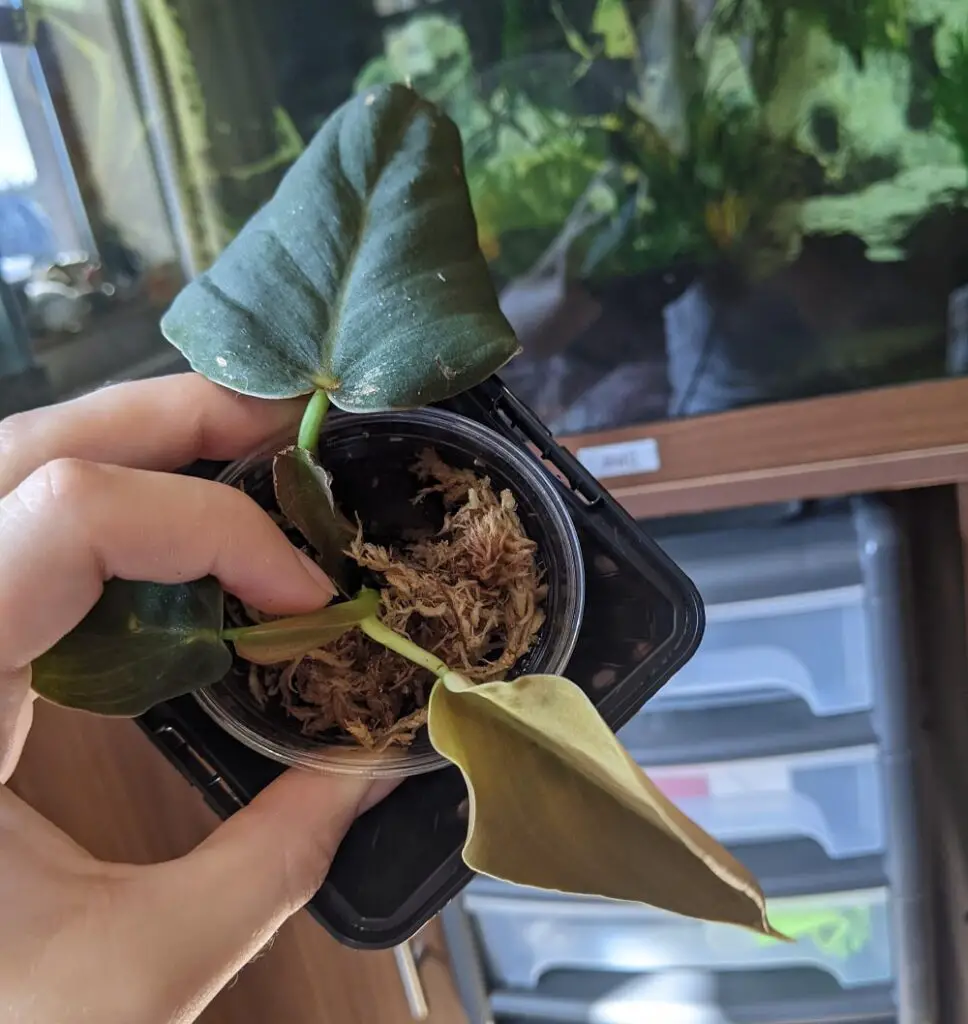I lived in an area where the indoor and outdoor humidity level keeps fluctuating. I initially found it challenging to keep my philodendrons healthy. But through several trials and errors, I discovered an authentic trick to solve the issue.
So, do philodendrons like to be misted? Yes. These tropical plants thrive in a warm and humid environment. Misting helps to increase humidity levels and clean the leaves. But misting the plant in a poorly ventilated room will attract pests and fungal diseases.
Philodendrons usually love high humidity levels than other houseplants. You’ll need to install a hygrometer in the house to help in measuring the humidity level. Ensure the indoor humidity does not drop below 50%.
Remember to expose your philodendrons to bright indirect sunlight. Moisture and light will help to promote lavish growth with stunning foliages. Water the houseplant when the topsoil dries up and provides a temperature range of 65-78oF.
Keep reading this article to find more on the advantages of misting philodendrons and other ways of increasing humidity around the plant.
You May Also Like: Black Spots on Houseplant Leaves

Advantages of Misting Philodendron Plants
Misting philodendron plant is never in vain. The task comes with several advantages to the houseplant apart from fostering better growth and health. These benefits include:
Increase Humidity Level
The philodendron plant thrives in a warm and humid environment. The condition allows the houseplant to experience better growth and health.
Besides that, these plants are native to a tropical forest where the humidity level is high. Misting makes the indoor growing environment mimic their native habitat.
Keep Plant Clean
Most philodendron varieties are more vulnerable to dust accumulation. These dust particles usually block pores on the leaves.
Blocked pores inhibit the leaves from undertaking their physiological activities. Misting helps to clean the leaves and open the pores. It also makes the pant look fresh and glossy.
Reduce Philodendron Watering Frequency
Misting make the atmosphere around the plant humid. The philodendrons will experience less moisture loss from their potting soil.
The houseplant enthusiast will have to water the plant less often to reduce the risk associated with a damp environment. Overwatering is responsible for the root rot problem.
Engages the Plant Owner
Many plant owners usually neglect their houseplants due to their busy schedules. It is the leading reason behind the philodendron growth problems.
Misting more often will help to engage the plant parent with their houseplants. You’ll be able to observe the plant closely and identify any issue at an early stage.
You May Also Enjoy: How Do Self-Watering Pots Work?
How to Tell If My Philodendron Need Humidity?
Several pointers help to indicate low moisture content around the houseplant. These signs will help you know if your philodendron needs more humidity or not. They include:
Philodendron Leaves Turning Yellow
Low humidity around the plant encourages excessive water loss through the leaves. The leaves will start to droop and turn brown on the edges. The leaves will eventually turn yellow.
Philodendron Drooping Leaves
These plants are native to a tropical forest where the climate is warm and humid. Low humidity makes the leaves drop and brown on the edges and tips. The condition also causes the potting soil to dry faster.
Philodendron Leaves Have Brown Edges and Tips
Most philodendron varieties love high humidity levels. Any slight drop in humidity will make the houseplant leaves turn brown on the edges and tips. Misting the indoor plant will help to increase the humidity level.
Philodendron Leaves Wilting and Becoming Crispy
Dry air around the philodendron plant will encourage excessive water loss. If the condition persists, the leaves will begin to will and eventually become crispy. Misting and watering are the only ways to save the dying houseplant.
You May Also Read: How to Care for Philodendron Brasil
How Often Should I Mist My Philodendron?
Philodendrons prefer high humidity to promote lavish growth and glossy vegetations. But the indoor growing condition is super dynamic in terms of temperature and humidity.
So, how often should I mist my philodendron? Mist the philodendron twice a week in the spring and summer. Avoiding the misting philodendron leaves in winter to reduce the risk of leaf-related problems.
I recommend misting the houseplant leaves once every ten days in winter. Philodendrons usually experience dormancy in winter and will utilize less water.
Philodendrons thrive in an environment with high humidity and experience frequent rainfall. The moist soil will help to avoid leaf stresses such as drooping and curling.
Houseplant enthusiasts need to emulate the native habitat growing condition for their philodendron plants. Remember to water the plant according to their requirements.
You Might Also Like: How to Care for Philodendron Xanadu
How to Increase Humidity for Philodendron Plants?
The indoor environment is more vulnerable to humidity fluctuations. Every plant owner needs to take measures and increase humidity levels to foster better houseplant growth.
We have listed some proven and effective ways of increasing humidity for philodendron plants at home. Take the time to read through and implement any method for your houseplant to thrive.
Install a Humidifier
An automatic humidifier is an excellent alternative to misting. The instrument helps to keep the humidity level high around the houseplants.
Use Pebble Tray
Fill the tray with some pebbles and water. Put the tray under the plant pot, and water will evaporate continuously to boost the humidity level.
Relocate the Plant to a Humid Room
A humid and moist environment makes philodendrons thrive. Relocating the houseplant from the current location to the bathroom or kitchen would be the best option. These areas are always humid regardless of the weather.
Group Your Philodendron with Other Houseplants
Grouping houseplants together will help to boost the humidity level. Transpiration happens to be the reason behind an increase in humidity. The release of moisture from other plants will maintain high humidity around your philodendron.
Add a Moss Pole
Moss poles usually add moisture around the philodendron plant. It also supports the aerial roots of philodendron to facilitate better overall growth.
Reduce the Room Temperature
Low temperatures help to boost the humidity level. Cold air usually holds more moisture than warm air. Therefore, lowering the room temperature will help to maintain more moisture around the houseplant.
You May Also Enjoy: Why Are My Philodendron Leaves Curling?
Related Questions
Should I Mist My Philodendron Brasil?
Yes. Misting helps to boosts the humidity level around philodendron Brasil. The condition will enable your philodendron brasil to experience lush growth and shiny foliages.
Should I Mist My Philodendron Birkin?
Yes. Philodendron Birkin is a tropical plant and loves a humid environment. Misting this plant more often help to increase humidity level that fosters better growth.
Do Philodendrons Need a Lot of Water?
Not really. Too much water will cause more harm to the plant. Precautions should be put into consideration when watering the houseplant. Water your philodendron twice a week during spring and summer.

Conclusion
Philodendron originates from the tropical rainforest of Colombia, the Caribbean, and Venezuela. The weather is warm and humid to make philodendrons thrive. (Source: University of Florida).
The indoor environment experiences humidity fluctuation more often than the plant native habitat. Misting the leaves always helps to boost humidity to promote lush growth and shiny vegetation.
But do not overdo it since too much water on the leaves increases the risk of leaf-related problems. Besides that, you’ll risk overwatering your philodendron plant in the long run.
Follow the philodendron plant care routine religiously to bring tropical vibes to your indoor space. I hope this article has answered your question fully.
You May Also Enjoy: How to Care for Heartleaf Philodendron
